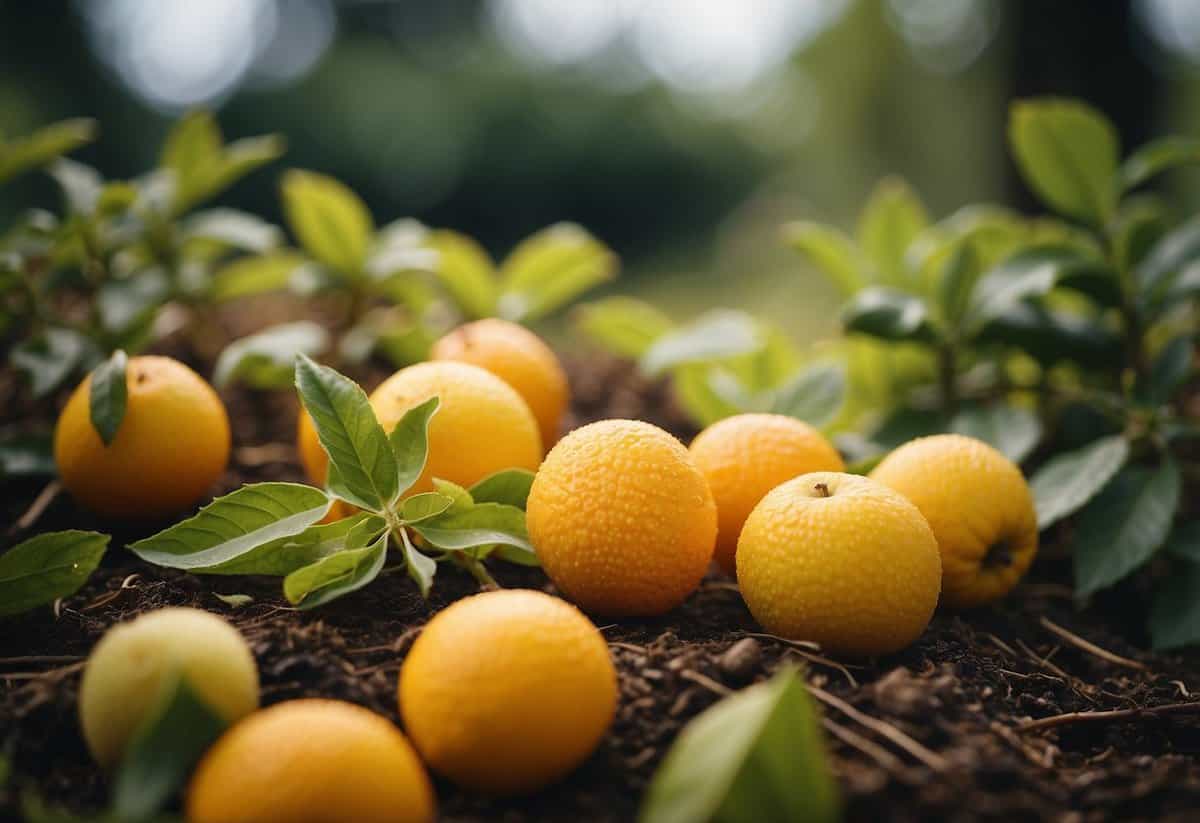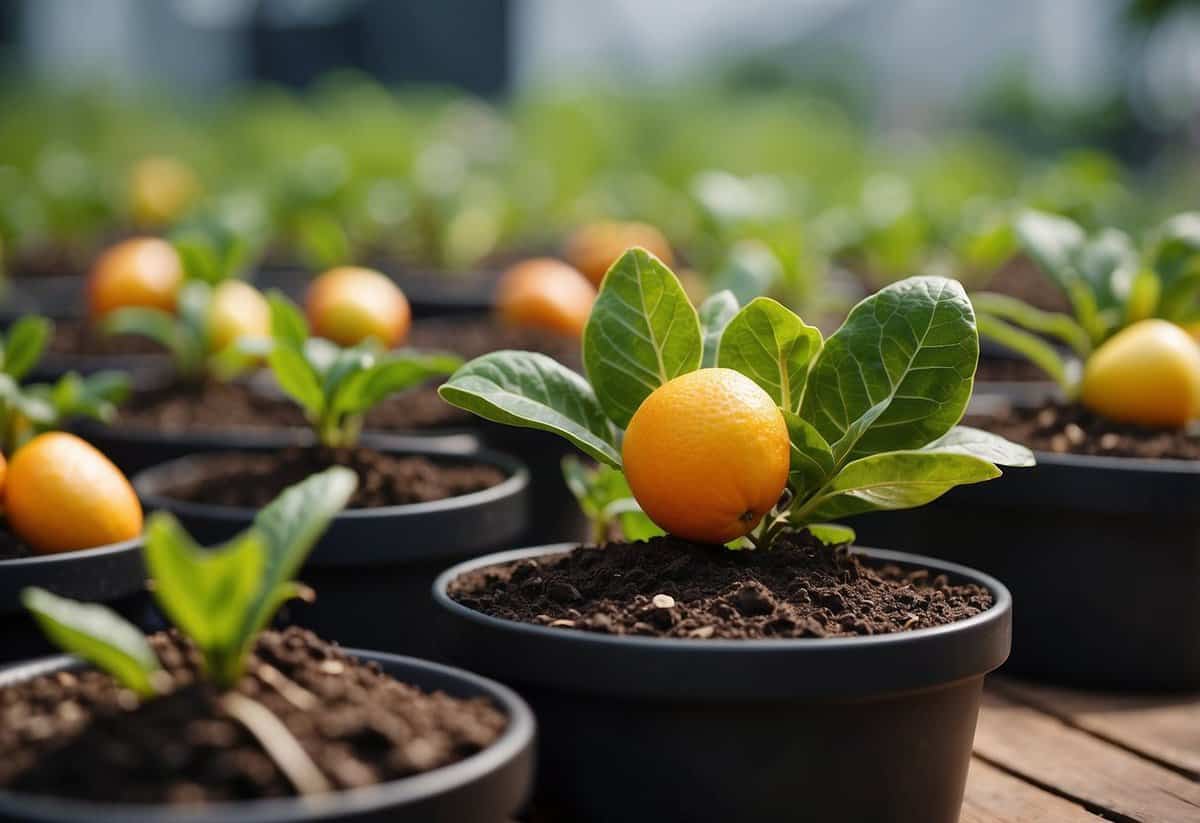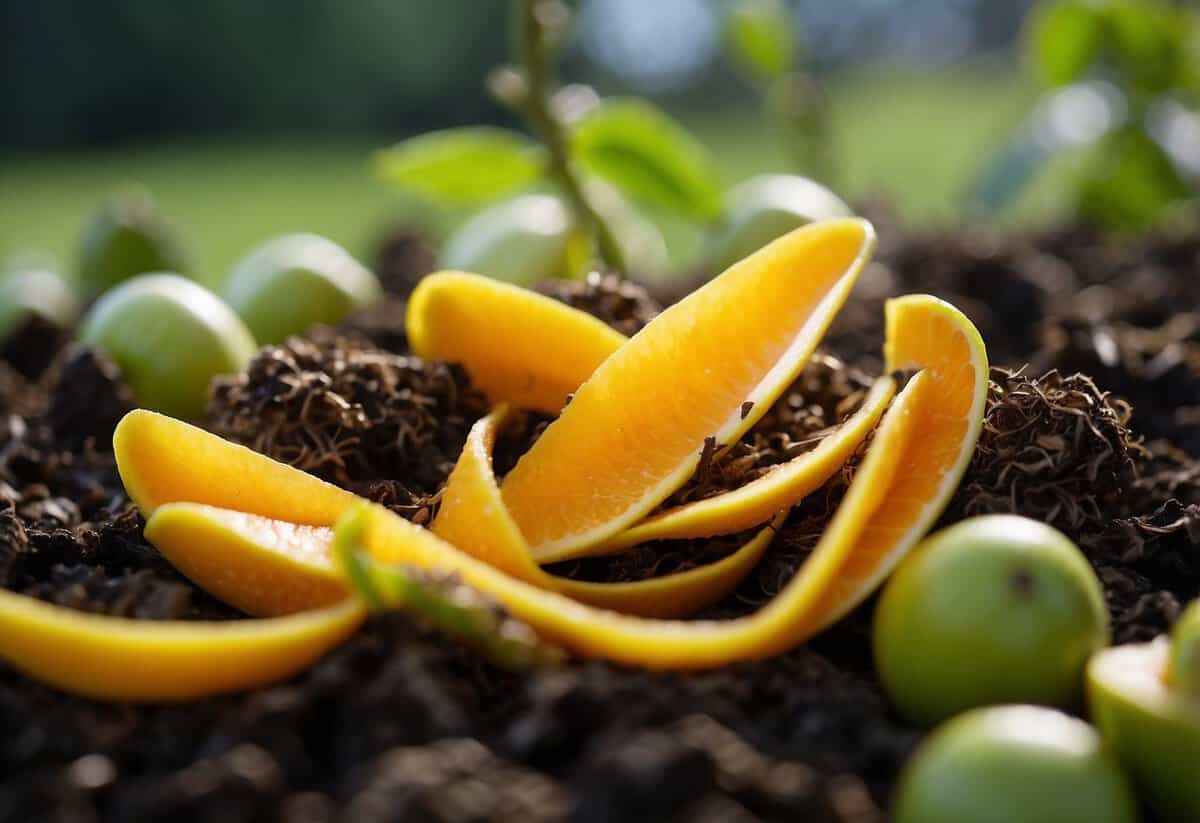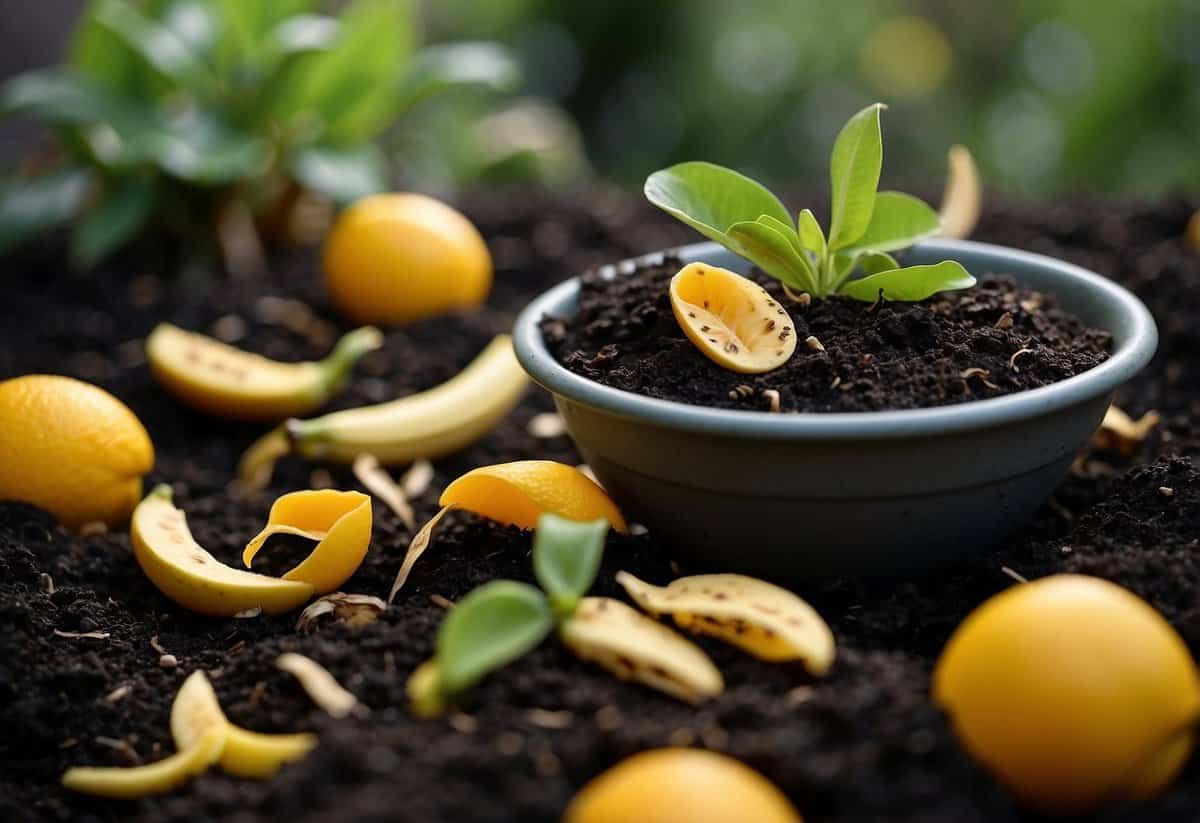Are Fruit Peels Good for Plants? Discover Their Benefits
Are fruit peels good for plants? Absolutely! Using fruit peels in your garden is an excellent way to create organic fertilizer. Banana peels, for instance, are rich in potassium, which helps plants produce strong stems and vibrant flowers.

Orange peels contain valuable nutrients such as potash, iron, and calcium, which can improve soil health and aid in plant growth. By grinding and mixing these peels with water, you can create a nutrient-rich paste that benefits your garden’s vegetables and flowers.
Incorporating fruit peels into your gardening routine not only provides essential nutrients but also promotes sustainable practices. By recycling these natural resources, you’re directly contributing to a healthier environment while ensuring your plants thrive. So next time you eat a piece of fruit, remember that those peels can be more useful than you might think!
Benefits of Fruit Peels in Gardening

Using fruit peels in gardening can offer numerous benefits such as improving soil health with essential nutrients, enhancing plant growth and flowering, and promoting eco-friendly and sustainable gardening practices.
Nutritional Value of Fruit Peels for Soil Health
Fruit peels are rich in nutrients that are vital for healthy soil. Banana peels, for example, are high in potassium, which helps with root development and strengthens the plant’s stems. Orange peels provide calcium, iron, and nitrogen, boosting soil fertility.
Apple peels are packed with potassium, calcium, and phosphorus, all of which are essential for plant growth. When you add these peels to the soil, they decompose and release these nutrients, enriching the soil. This promotes better photosynthesis and overall plant health.
Enhancing Plant Growth and Flowering
Adding fruit peels to your garden can significantly enhance plant growth and flowering. The high potassium content in banana peels, for instance, helps improve flower and fruit production. Using a paste of orange peels can improve the nitrogen content in the soil, leading to lush foliage and strong stems.
Apple peels, rich in various micronutrients, boost the plant’s health and vigor. When you use these peels, you introduce organic matter to the soil, promoting better root development. This results in healthier, more productive plants that can produce more flowers and fruits.
Eco-Friendly and Sustainable Practices
Utilizing fruit peels as fertilizers is an eco-friendly and sustainable practice. By recycling kitchen waste like banana, orange, and apple peels, you reduce the amount of waste that ends up in landfills. This practice also minimizes the need for chemical fertilizers, which can harm the environment.
The use of organic materials such as fruit peels promotes a sustainable gardening approach. It supports a healthy ecosystem, encouraging beneficial microorganisms in the soil. Overall, incorporating fruit peels into your gardening routine not only helps your plants but also contributes to a more sustainable planet.
How to Use Fruit Peels in Your Garden

Using fruit peels in your garden can improve soil health and provide plants with essential nutrients. Commonly used peels include banana, orange, and mango peels, each offering unique benefits.
Composting Fruit Peels
Composting is a great way to recycle fruit peels into nutrient-rich humus for your garden. Start by collecting peels from your kitchen, such as banana, apple, or mango peels. Chop them into small pieces to speed up decomposition.
Place the chopped peels into your compost bin, layering them with other kitchen scraps like vegetable peels and coffee grounds. Alternate these layers with browns like dried leaves or shredded paper to balance nitrogen and carbon.
Turn the compost regularly to aerate it and add water if it feels dry. In a few months, you’ll have rich compost ready to mix into your garden soil.
Preparing Fruit Peel Fertilizers and Mulches
Fruit peels can be directly used to make simple fertilizers and mulches. For a liquid fertilizer, soak banana or orange peels in water for a day or two. Strain out the solids, and use the nutrient-rich water to irrigate your plants.
To make mulch, spread chopped fruit peels around the base of your plants. Banana peels, being high in potassium, can be especially beneficial for flowering plants. Mango peels, rich in vitamins, also work well as mulch.
Both methods help improve soil structure, retain moisture, and provide essential nutrients to your plants.
Direct Application Techniques
You can also apply fruit peels directly to your garden without composting or preparing fertilizers. For instance, bury banana peels a few inches deep in the soil near your plants. This helps release nutrients gradually as the peel decomposes.
Orange peels can deter pests. Cut them into pieces and scatter them around plants to keep ants and aphids away. For a quick nutrient boost, blend fruit peels with water to create a slurry, then apply it directly to the soil.
Make sure to cover the blended peels with some soil to avoid attracting pests. This direct technique is simple and effective, making your garden thrive with minimal effort.
Common Fruit Peels and Their Specific Advantages

Fruit peels are more than just waste; they can be incredibly beneficial for your plants. Each type of peel, from bananas to apples, offers unique nutrients that promote healthy growth.
Citrus Peel Benefits: From Lemons to Oranges
Citrus peels, including orange and lemon peels, are packed with beneficial nutrients. They contain potash, iron, zinc, calcium, and citrate, which are great for green vegetables. These nutrients improve soil morphology and fulfill the micronutrient needs of plants.
To use, grind 4-6 orange peels with 100-200 ml of water to make a paste. This can be applied directly to the soil around your plants. Citrus peels also have nitrogen, helping in better leaf and flower growth. Their natural acids can help deter pests, making them a handy and eco-friendly addition to your garden.
Banana Peels: Rich in Potassium
Banana peels are an exceptional source of potassium, manganese, and calcium. Potassium is crucial for plant growth as it aids in the development of strong stems and helps plants resist diseases. Calcium helps in the cell wall structure, while manganese aids various plant processes.
Simply chop banana peels and bury them in the soil near the roots of your plants. Over time, they decompose and release these nutrients into the soil, enhancing flowering and fruit production. Banana peels are especially useful for vegetable plants, enriching the soil and boosting overall plant health.
Apple and Mango Peels: A Source of Diverse Nutrients
Apple and mango peels offer a rich blend of potassium, vitamin A, vitamin C, folate, iron, calcium, and phosphorus. These nutrients collectively support the robust growth and development of your plants. Vitamin C and β-carotene act as antioxidants, promoting healthy cell growth.
To use apple peels, collect and crush them in a grinder, adding half a cup of water. Dilute this mixture in a 1:1 ratio with water and apply it to your plants every 6-8 weeks. Mango peels can similarly be chopped and mixed into the soil. These peels help in maintaining a balanced nutrient mix in the soil, fostering healthier and more vibrant plants.
These simple practices turn kitchen waste into valuable garden resources, making your garden greener and more fruitful.
Avoiding Potential Problems with Fruit Peels

Using fruit peels in your garden can have several benefits, but it’s important to handle them correctly to avoid issues like attracting pests or altering soil conditions. Here are some key points to consider.
Issues with Pests and Attracting Unwanted Animals
Fruit peels can attract pests and unwanted animals like ants, slugs, and rodents. To prevent this, avoid leaving large pieces of peels on the surface of your garden. Instead, you can bury the peels a few inches deep in the soil.
You can also chop or grind the peels into smaller pieces before burying them. This helps them break down faster and reduces the chances of attracting pests. If you notice a pest problem, consider setting up natural barriers or traps to protect your plants.
Acidifying Soil with Citrus Peels
Citrus peels like those from oranges or lemons can acidify the soil. While this can be beneficial for certain plants that thrive in acidic conditions, it can harm others.
To manage this, use citrus peels sparingly and avoid using them around plants that prefer neutral or alkaline soil. You might also mix citrus peels with other types of fruit peels to balance their effect on soil pH. This ensures your soil stays healthy and suitable for various plants.
Tips for Proper Decomposition
Proper decomposition of fruit peels is crucial for them to provide nutrients without causing problems. To help fruit peels decompose faster, you can chop or grind them into small pieces. Mixing fruit peels into a compost pile with other organic materials can also speed up the process.
Make sure your compost has a good balance of carbon and nitrogen to support decomposition. Turning the compost regularly helps maintain its structure and prevents it from becoming too wet or too dry.
Ensuring a Balanced Nutrient Mix
Fruit peels are rich in various nutrients, but relying too heavily on one type can lead to imbalances in your soil. For example, banana peels are high in potassium, while apple peels have a range of micronutrients such as calcium and iron.
To ensure your plants get a balanced nutrient mix, use a variety of fruit peels. You can also occasionally test your soil to check for any deficiencies or excesses in nutrients. This helps maintain soil morphology and supports the overall health of your garden.
Using fruit peels wisely can greatly benefit your garden. Just be sure to consider these potential issues and take steps to avoid them. This will help you make the most of the nutrients while keeping your garden clean and protected from pests.
Creative Ideas for Using Fruit Peels in Gardening

Using fruit peels in your garden can improve soil health and boost plant growth. Different peels offer varied benefits, from homemade liquid fertilizers to innovative ways to start seedlings.
Homemade Liquid Fertilizers from Peels
You can make nutrient-rich liquid fertilizers from fruit peels. Banana peels, for example, are rich in potassium, which promotes flower and vegetable growth. To create this fertilizer, chop your peels and soak them in water for about a week. Once ready, dilute the liquid with water at a 1:1 ratio before applying it to your garden plants.
Orange and apple peels work similarly. Orange peels add calcium and potassium, boosting leaf growth for green vegetables. Apple peels contribute iron and phosphorus, enhancing overall plant growth.
Mango peels, filled with vitamins and fiber, can also be turned into liquid fertilizers, promoting healthy soil and plant development. Keep the liquid in an airtight container, and use as needed for your gardening tasks.
Integrating Peels into Flower and Vegetable Gardens
Incorporating fruit peels directly into your garden soil is another effective method. Banana peels, when buried near tomato and pepper plants, can boost flowering and fruit production. This approach slowly releases nutrients into the soil, offering continuous fertilization.
Apple peels can be crushed and mixed into the soil to support flower growth and vegetable plants. Adding these peels encourages the growth of plants like peppers and tomatoes by providing essential nutrients like potassium and iron.
Orange peels, when scattered around the base of your herbs and vegetables, will decompose and enrich the soil. They help fend off pests naturally, offering a dual benefit of fertilization and pest control.
Fruit Peels as Seedling Starters
Fruit peels can serve as excellent seedling starters. For example, use an avocado shell to plant seeds. The shell’s shape makes it a perfect tiny pot, rich in nutrients that seedlings need. Once your seedlings are ready to be transplanted, place the entire peel in the soil, and it will decompose, feeding your plants.
You can also use banana peels for this purpose. Cut the peel into sections and plant seeds directly into them. Over time, the peel will break down, providing a steady nutrient supply as your seedlings grow.
Citrus fruit halves, like orange or grapefruit peels, work well as biodegradable pots. Fill with soil, plant your seeds, and once ready, transfer the entire “pot” into your garden. This method is environmentally friendly and offers a continuous nutrient source for your young plants.







